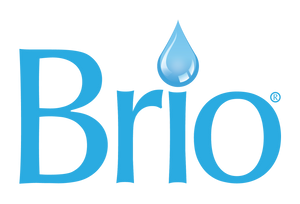BEST SELLERS

Brio AQUUS Sistema de filtración debajo del fregadero RO sin tanque 800 GPD

Brio PRISM Sistema de filtración debajo del fregadero RO sin tanque 600 GPD

Brio AQUUS Sistema de filtración debajo del fregadero RO sin tanque 600 GPD

Brio SIMPL Tankless Reverse Osmosis (RO) Undersink Filtration System 400GPD

Brio SIMPL Tankless Reverse Osmosis (RO) Undersink Filtration System 600GPD

Brio SIMPL Tankless Reverse Osmosis (RO) Undersink Filtration System 800GPD

Brio 11" Multi Stage Undersink Water Filtration System & Faucet

Brio 11" Multi Stage Undersink Water Filtration System

Brio 16" Multi Stage Undersink Water Filtration System

Brio 22" Multi Stage Undersink Water Filtration System

Brio 26" Multi Stage Undersink Water Filtration System

Brio 3-Stage Instant Hot Water Undersink Dispenser System - Brushed Nickel

Brio 3-Stage Whole House Filtration System - 20" Multi-Purpose

Brio AQUUS Sistema de filtración debajo del fregadero RO sin tanque 1000 GPD

Brio AQUUS Sistema de filtración debajo del fregadero RO sin tanque 1200 GPD

Brio 3-Stage Whole House Filtration System - 20" Anti-Scale

Brio 3-Stage Instant Hot Water Undersink Dispenser System - Matte Black

Brio 3-Stage Whole House Filtration System - 20" Heavy Metals

Sistema de filtración debajo del fregadero Brio G10-U RO negro

Sistema de filtración debajo del fregadero Brio de 3 etapas

Brio Amphora Ultrafiltración Sistema de filtración debajo del fregadero con grifo negro

Sistema de filtración debajo del fregadero Brio Amphora RO - Jarra

Brio 3-Stage Instant Hot Water Undersink Dispenser System - Brushed Gold

Sistema de filtración debajo del fregadero Brio de 2 etapas

Sistema de filtración debajo del fregadero Brio G10-U RO blanco

Brio 3-Stage Digital Instant Hot Water Undersink Dispenser System - Brushed Nickel

Sistema de filtración debajo del fregadero Brio G20-U RO negro

Sistema de filtración debajo del fregadero Brio G20-U RO - Natural

Brio 3-Stage Digital Instant Hot Water Undersink Dispenser System - Matte Black

Brio 3-Stage Instant Hot Water Undersink Dispenser System - Chrome Plated

Brio Amphora Ultrafiltración Sistema de filtración debajo del fregadero con grifo blanco

Brio 3-Stage Digital Instant Hot Water Undersink Dispenser System - Brushed Gold

Brio 3-Stage Digital Instant Hot Water Undersink Dispenser System - Chrome Plated

Sistema de filtración debajo del fregadero Brio G20-U RO blanco

Brio 3-Stage Instant Hot Water Undersink Dispenser System - Oil-Rubbed Bronze

Brio 3-Stage Whole House Filtration System - 20" Iron & Manganese

Brio 3-Stage Digital Instant Hot Water Undersink Dispenser System - Oil-Rubbed Bronze

Brio 3-Stage Instant Hot Water Undersink Dispenser System - Rose Gold

Brio 3-Stage Digital Instant Hot Water Undersink Dispenser System - Rose Gold

Brio PURE Balance Replacement Filter Kit for URO6PURBAL

Brio PURE Aquafuse Replacement Filter Kit for URO6PURALK

Brio Single Stage Whole House Filtration System - 10" CTO

Brio Single Stage Whole House Filtration System - 10" Heavy Metals

Brio Single Stage Whole House Filtration System - 10" Anti-Scale

Brio Single Stage Whole House Filtration System - 10" Sediment

Brio Single Stage Whole House Filtration System - 20" CTO

Brio Single Stage Whole House Filtration System - 20" Heavy Metals

Brio SIMPL Tankless Reverse Osmosis (RO) Undersink Filtration System 400GPD

Brio SIMPL Tankless Reverse Osmosis (RO) Undersink Filtration System 600GPD

Brio SIMPL Tankless Reverse Osmosis (RO) Undersink Filtration System 800GPD

Brio AQUUS Sistema de filtración debajo del fregadero RO sin tanque 800 GPD

Brio PRISM Sistema de filtración debajo del fregadero RO sin tanque 600 GPD

Brio AQUUS Sistema de filtración debajo del fregadero RO sin tanque 600 GPD

Sistema de filtración debajo del fregadero Brio G10-U RO negro

Brio AQUUS Sistema de filtración debajo del fregadero RO sin tanque 1200 GPD

Sistema de filtración debajo del fregadero Brio Amphora RO - Jarra

Brio AQUUS Sistema de filtración debajo del fregadero RO sin tanque 1000 GPD

Sistema de filtración debajo del fregadero Brio G10-U RO blanco

Sistema de filtración debajo del fregadero Brio G20-U RO negro

Sistema de filtración debajo del fregadero Brio G20-U RO - Natural

Sistema de filtración debajo del fregadero Brio G20-U RO blanco
Frequently Asked Questions
We've included a list of FAQs for a wide variety of categories.
What’s the best way to choose a water filter for your home?
The right water filter depends on your water source, its quality, and how you plan to use the filtered water. Do you have municipal tap water or a private well? Check your local water report or test your water to identify contaminants like chlorine, lead, PFAS, sediment, or hard minerals.
A pitcher or faucet-mounted filter may be enough to improve taste or odor, but more serious concerns call for a more advanced
system. Undersink reverse osmosis (RO) systems are popular for their broad range of contaminant removal. Whole house filtration systems are ideal for your entire home, including showers and laundry.
For renters, a refillable tank countertop water dispenser may be the best low-maintenance solution. Consider your space, water usage, and how much upkeep you’re comfortable with. The best filter is the one that fits your needs without
adding unnecessary complexity.
How do whole house filtration systems work, and what do they remove?
A whole house water filtration system is installed at the main water supply line, so every faucet and fixture in your home benefits. These systems can handle high flow rates and large volumes. They’re ideal for
households with multiple bathrooms and water-using appliances.
Brio Whole House Filtration Systems reduce sediment, chlorine, VOCs, and
other contaminants. Carbon filters improve taste, while other filtering stages target specific chemicals or minerals. Multi-stage designs combine different filtration methods to address a broad range of issues.
Whole house filtration systems don’t remove everything that a reverse
osmosis (RO) system can. However, they significantly improve water quality
throughout your home. You’ll enjoy cleaner clothing and dishes, as well as less
mineral buildup in your appliances—even your coffee maker. For ultra-purified water, pair a whole house system with the Brio Tankless RO Undersink Filtration System.
How does reverse osmosis purify drinking water?
Reverse osmosis (RO) removes impurities by forcing water through a semipermeable membrane. With pores as small as 0.0001 microns, the membrane allows water molecules to pass through while blocking lead, arsenic, fluoride, chlorine byproducts, nitrates, and even microorganisms like bacteria, parasites, and viruses.
RO systems typically include pre-filters and post-filters to remove
larger particles, reduce chlorine, and improve taste. The result is clean,
crisp-tasting water ideal for drinking and cooking.
One of the advantages of an RO system is its ability to remove dissolved solids that many other filters miss. It’s especially helpful if your water contains high levels of impurities or comes from a questionable source. While RO systems produce wastewater, modern designs are far more efficient. RO is a smart, long-term solution for advanced water purification at home or in the workplace.
What is UV water disinfection, and when is it useful?
Ultraviolet (UV) water disinfection uses a specialized lamp to eliminate potentially harmful microbes, including E. coli, Giardia, Cryptosporidium,
and Salmonella. The UV light damages the DNA of these microorganisms so they can’t reproduce or
cause illness.
UV systems don’t add chemicals or alter your water. They simply target biological contaminants, which makes them especially useful for homes that rely on well water or are affected by seasonal flooding or boil-water advisories.
Although UV systems don’t remove physical particles or chemicals like chlorine or PFAS, they’re highly effective when used as part of other filtration methods. Pairing UV with a multi-stage filtration system gives you broad-spectrum protection and peace of mind, especially when water quality is inconsistent or unpredictable.
What are PFAS or “forever chemicals,” and why do they matter?
PFAS (per- and polyfluoroalkyl substances) are synthetic chemicals used in products like nonstick cookware, waterproof fabrics, and food packaging. There are thousands of different types of PFAS, and they have been detected in soil, air, water, and even in human blood.
They’re called “forever chemicals” because they don’t break down easily. Long-term PFAS exposure has been linked to health risks, including thyroid problems
and cancer.
A high-quality water filtration system can reduce PFAS levels in your water. Reverse osmosis (RO) filters are generally considered the most effective option. Brio offers a range of reverse osmosis systems that provide advanced protection from PFAS and other contaminants.
Why is water flow rate important when picking a filtration system?
Flow rate is the volume of water that passes through a filter in a given time, stated in liters per minute (LPM or L/min), gallons per minute (GPM), or gallons per day (GPD). It affects how quickly you can access filtered water and how effectively the system meets your household’s daily needs.
A higher flow rate means faster fill-ups, whether you’re filling a glass, pitcher, or cooking pot. For example, Brio systems with a 400 GPD capacity offer a steady flow rate of 1 L/min, while 600 GPD models deliver 1.5 L/min.
Need more speed? An 800 GPD system provides up to 2 L/min. That can make a real difference in busy kitchens, shared homes, or office settings where quick access to clean water matters.
What makes tankless RO systems more efficient than traditional tank models?
Tankless reverse osmosis (RO) systems filter water on demand, eliminating the need for a storage tank. The tankless design provides a steady flow of freshly filtered water with less water waste. It also reduces the risk of stagnant water. Many tankless systems have lower pure-to-drain ratios compared to traditional
systems.
What does “pure-to-waste ratio” mean in a reverse osmosis system?
Pure-to-waste ratio indicates the proportion of filtered water produced versus the amount discarded. A 1:2 ratio means one cup of clean water for every two cups wasted.


















